On Christmas Day in 2020, volunteer RSPCA rescue officer Faye Smith received a phone call from her mother-in-law about a trapped magpie.
"My mother-in-law called to tell me it was stuck in some soccer goal netting in the yard behind her place, and asked if I could come," said Faye.
So Faye put her Christmas cooking to one side and headed off to rescue the trapped bird.
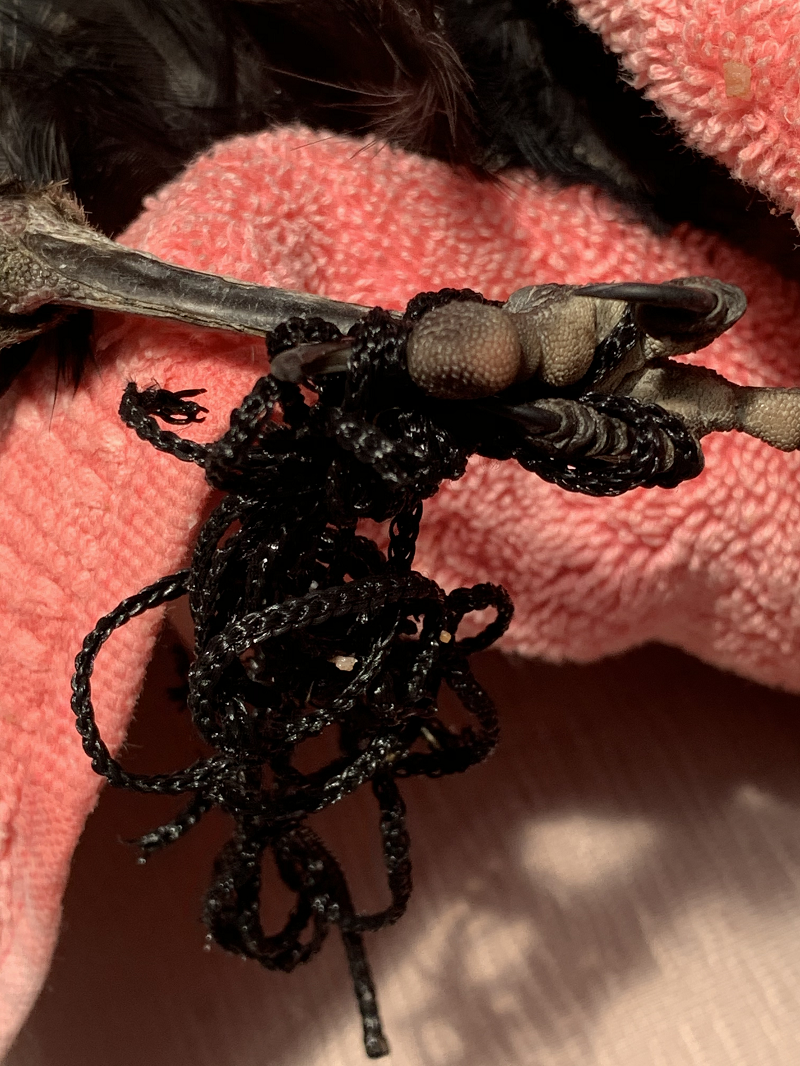
Netting, tangled tight around its claws
"It was in a soccer net that was really twisted around its foot – I got permission from the homeowner to cut the net," Faye explained.
"I had to check to see if its claw grip was okay to make sure nothing was broken."
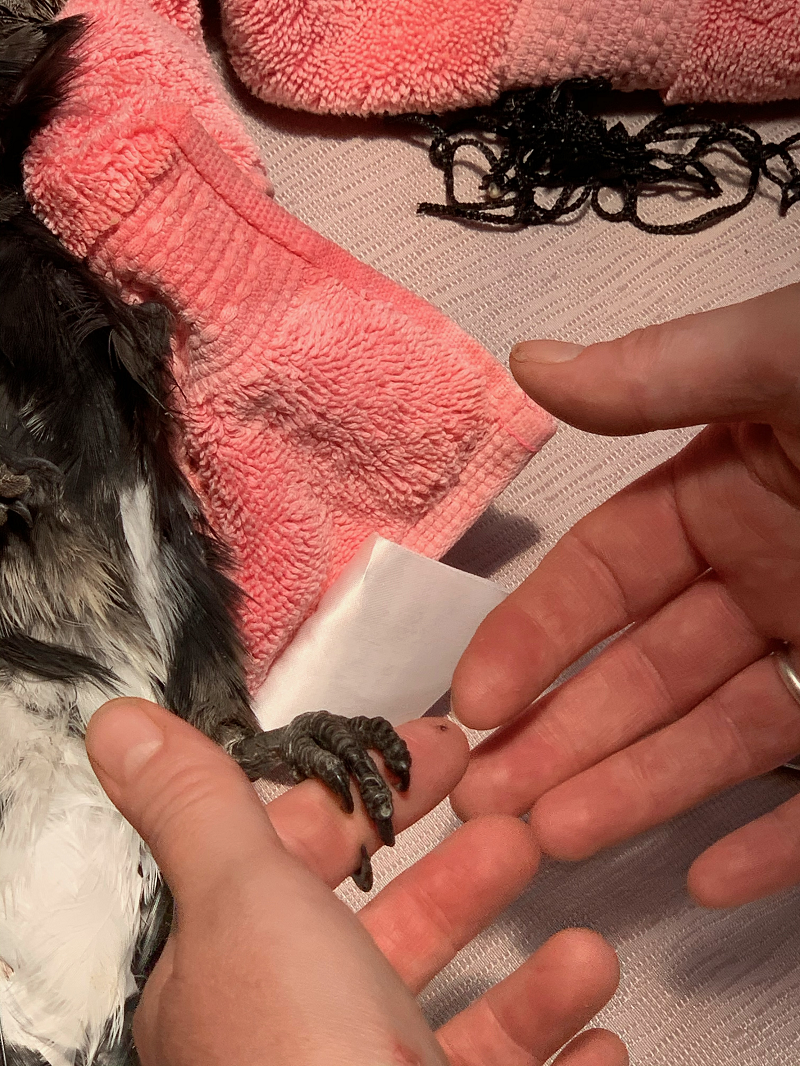
Checking grip strength before magpie's release
Once she was assured that the magpie was uninjured, Faye released it in the location where it was found.
Nalika Van Loenen, RSPCA SA's Senior Rescue Officer, is well aware of the ongoing issue regarding birds trapped in netting.
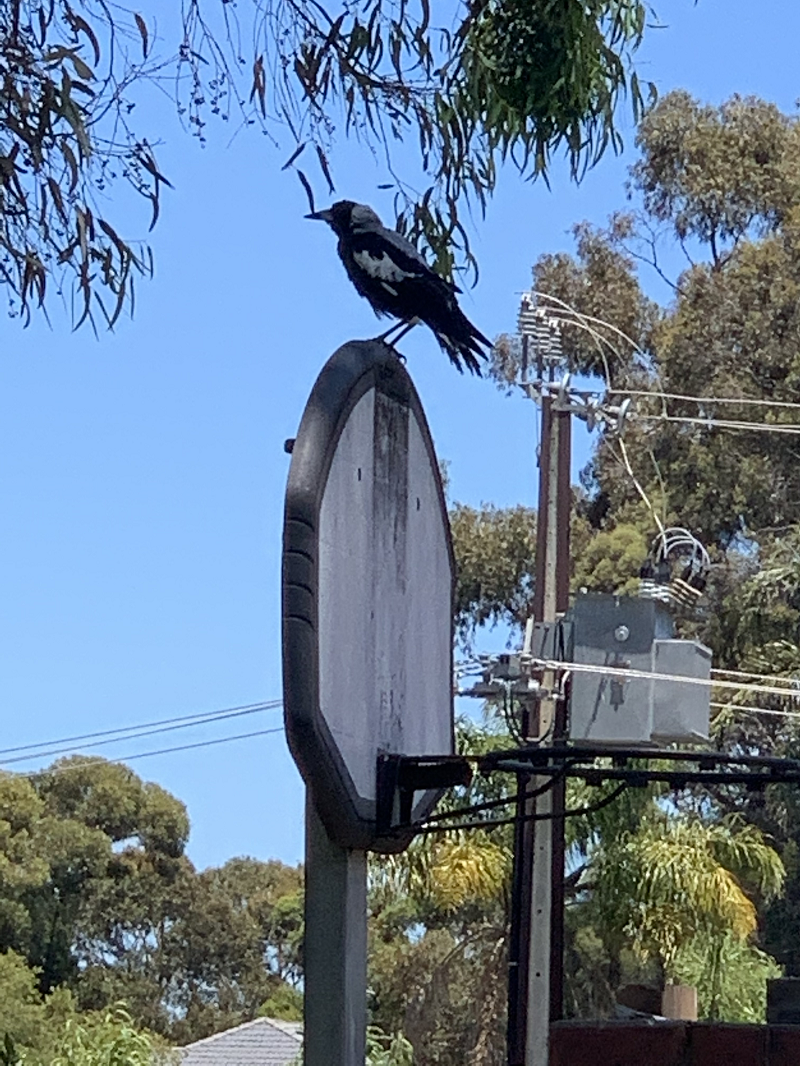
The freed magpie flew to another piece of sports equipment, fortunately this time without any netting.
"It's always a good outcome when these trapped birds are freed uninjured, but sadly that's not always the case," Nalika explained.
"Situations where birds are found upside down don't typically have good endings.
"Their wings and legs are often badly injured because they've been hanging upside down for so long.
"And with this magpie's rescue, there was a dog on the property so it could easily have ended quite badly."
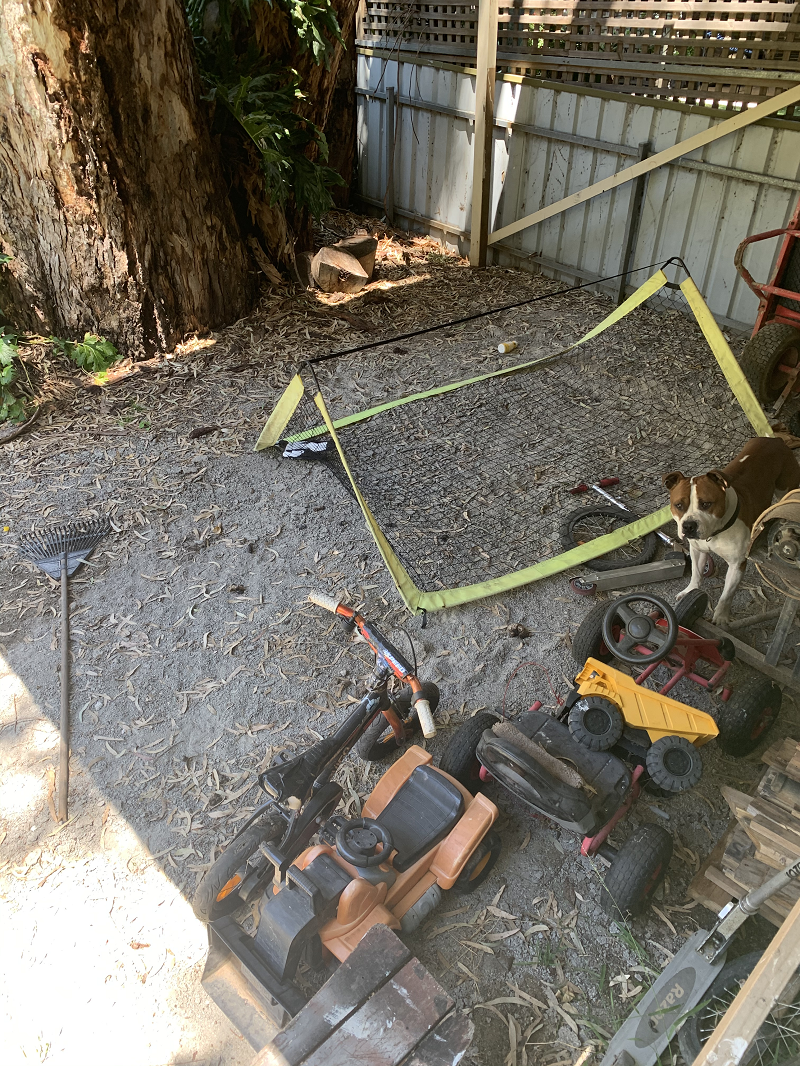
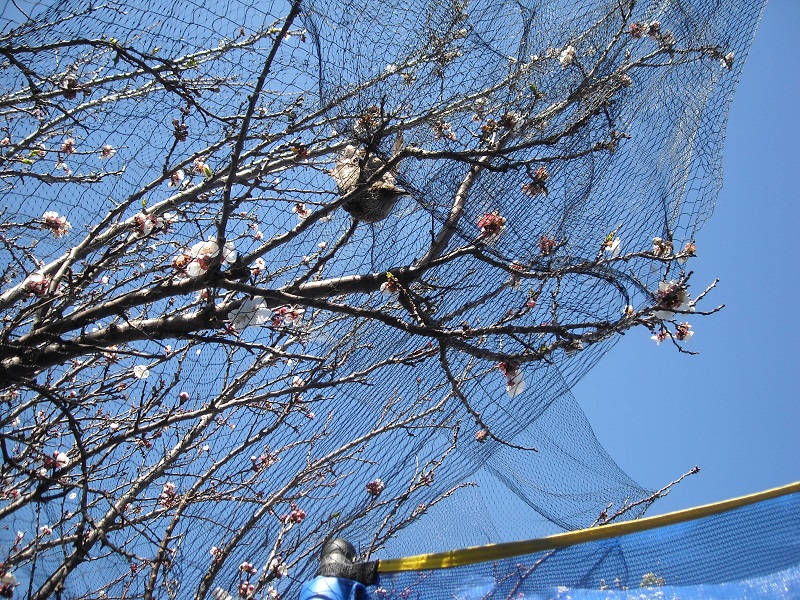
Most injuries occur when trying to escape
If trapped for a long time, birds can become very dehydrated, and often injure themselves trying to escape.
Apart from nets used to protect growing fruit and nets used for sport, wildlife can also become entangled in discarded fishing lines.
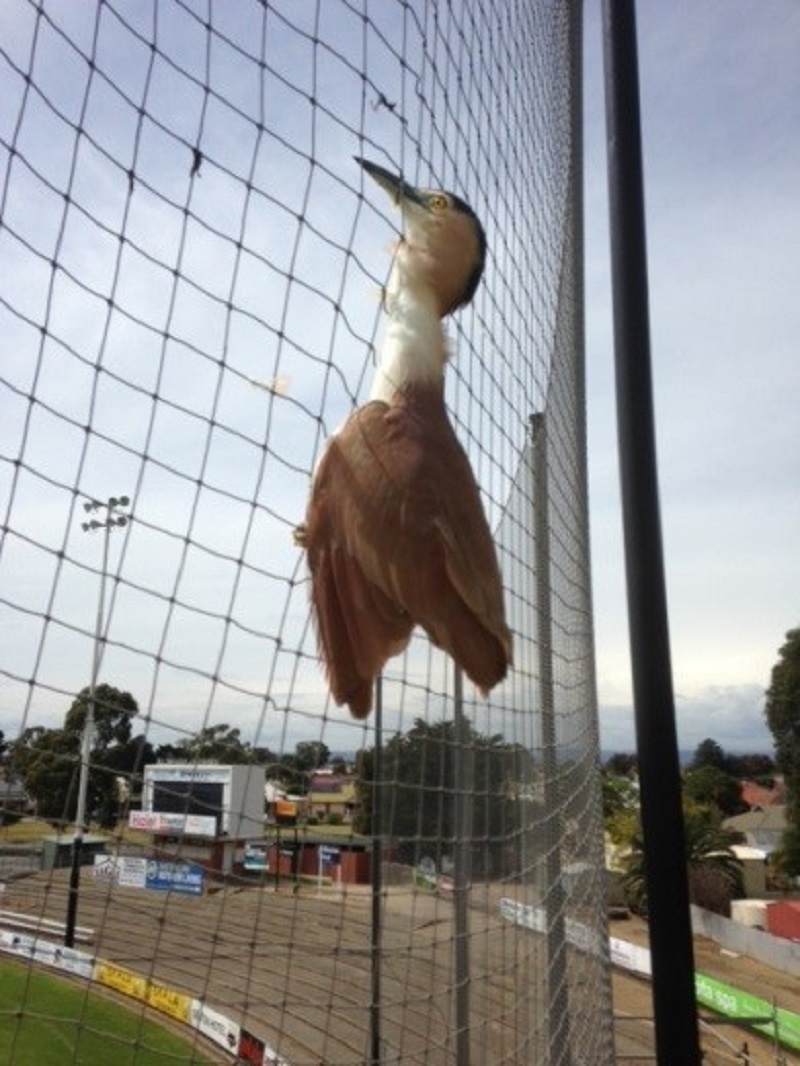
A trapped Nankeen Night Herron
Victoria leads legal changes to protect wildlife from netting
Victoria's state government has approved legislation, to be introduced by 1 September 2021, that will limit mesh sizes to be no greater than 5mm x 5mm for domestic and commercial use in the growing of fruit trees and other produce. Retailers will also be required to only stock and sell netting used for this agricultural purpose that is the smaller mesh size.
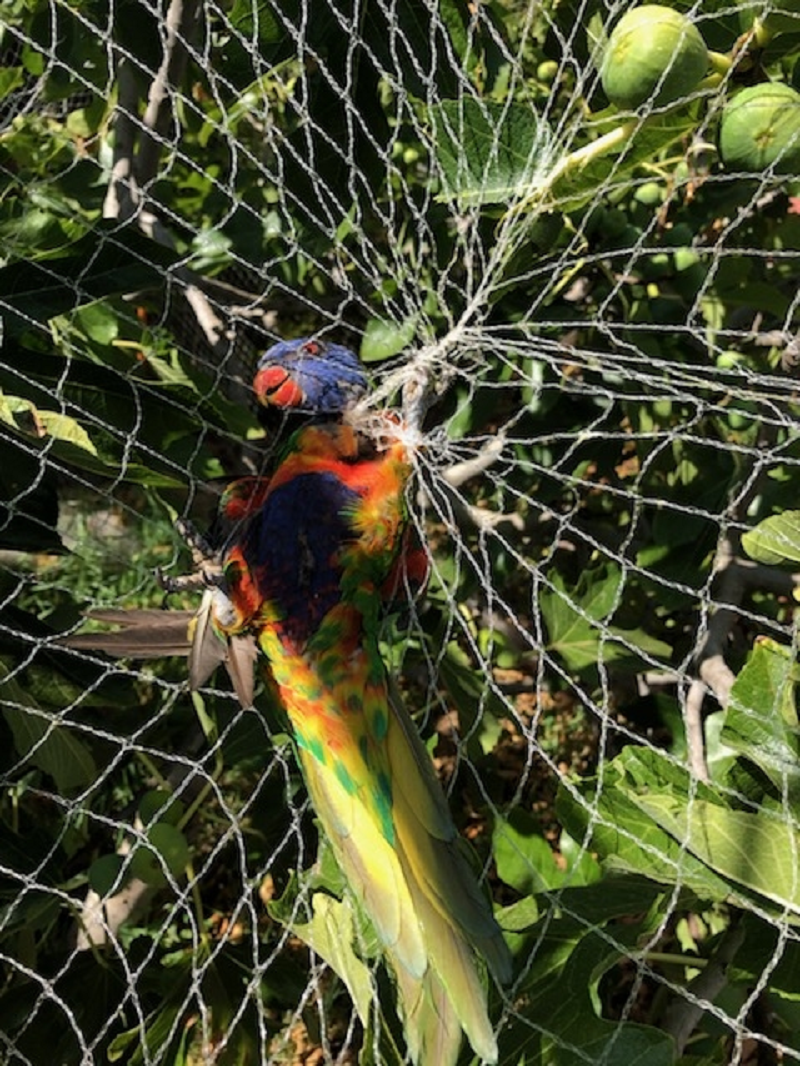
Mesh holes are too wide leading to wildlife getting trapped
The RSPCA recommends backyard fruit tree netting be installed in a way that helps it to be wildlife friendly. As the new laws in Victoria recognise, the type of netting used is very important. Newer types of netting that is white and has a mesh size smaller than 1cm can easily be seen by animals at night, unlike wider and dark-coloured variations.
When using older netting, such as black and green monofilament knitted netting, it should be installed tightly over a frame surrounding the tree, rather than draped on the tree directly.
If the netting passes a finger test, meaning that the mesh holes are so small you are unable to pass your finger through them, the netting can be draped over – but it should be secured to the trunk so that wildlife cannot get underneath it.






